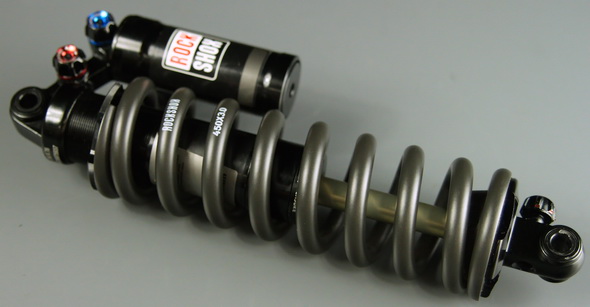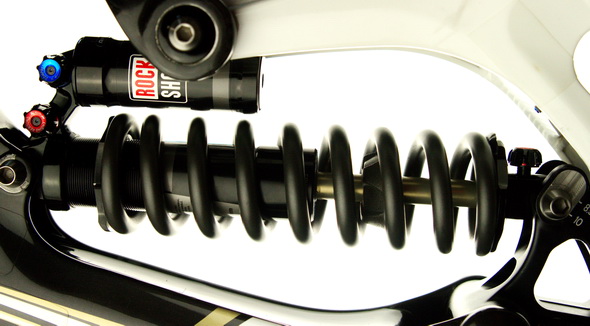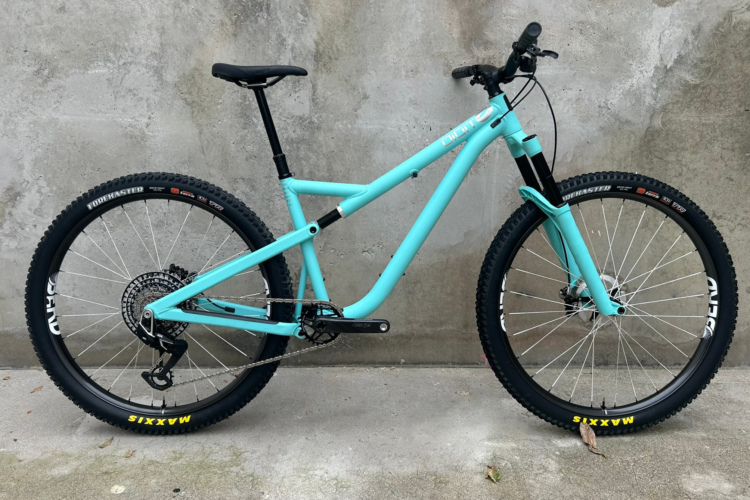The Vivid R2C has been Rock Shox’s leading shock for several years. Having made it’s way on board numerous World Cup bikes, this shock has won many events. For instance, the Vivid R2C was mounted on Danny Hart’s bike for his famous 2011 World Cup Championship win, with an 11.699 second margin. Rock Shox took extreme weather conditions and demanding events such as World Cup downhill races into consideration when constructing the revamped and improved Vivid Coil.
Specs
The new Vivid features visible improvements to the dials. The new dials and their positions allow for easier access and improved feel when adjusting ending stroke rebound and low speed compression. The beginning stroke rebound knob has also been improved, with a similar larger-diameter knob.
Built around a forged aluminum body and a machined 7075 aluminum shaft, the new Vivid sports some welcomed improvements. A new internal spring mechanism, called the Counter Measure, sits between the damper piston and body and is used to reduce the breakaway force of the damper to nearly zero pounds of force. (Breakaway force is essentially a delay in response before the shock works, producing almost a shuddering feeling.) To the rider, this means that the improved Vivid R2C shock will not have the sticky feeling that other shocks may experience.
The Dual Flow Adjust Rebound essentially takes the whole rebound circuit and splits it in two: one circuit for all the small bumps and pedaling forces (beginning stroke rebound), and the other for big hits (ending stroke rebound). With all this valving trickery you would think that would be enough. Well, Rock Shox also introduced a “Rapid Recovery” system to the rebound damping circuit. This circuit allows your suspension to recover faster between hits. It’s not just a faster rebound circuit, but rather a circuit that has a bit less damping until just past the mid stroke, and then slows down again so that you don’t get a harsh top-out.
The shock is available in 200mm x 57mm, 216mm x 63mm, 222mm x 70mm, 240mm x 76mm, and 289mm x 67mm.
Installation and Setup
Installing the Vivid coil on my Santa Cruz V10C was pretty easy. All I needed for tools were an 8mm hex key and a 13mm box wrench. The Vivid did required new mounting hardware, though. I recommend a three-piece hardware kit instead of older two-piece mounting kits: they last longer and wear the bushings less. Once you press in the new mounting hardware adapters, it’s a simple install.
Setting up the shock does take a bit of patience. Using the recommended spring weight (450lb, according to Santa Cruz), I then sat on the bike with the suspension in full open positions (all damping circuits in the least damping settings), and with the aid of a friend I started to add preload to the spring (half-turn increments) until I had the correct amount of sag in the system. I wanted 30% sag–76mm of shock travel multiplied by 0.7 equals 56mm.
Once we got the required sag, I started setting up the shock. With 3 clicks of compression, 5 clicks on the beginning stroke rebound, and 4 on the ending stroke rebound, I was ready to go.
Impressions
I wasn’t all that impressed with the initial setup of the Vivid. The sag was fine, but I felt as if the bike was bouncing off rocks more than it should, I also noticed that the rear end was sliding out a bit too easily as well. In the end, I added a bit more sag (less preload), and reset all the dials to the full clockwise (turtle) position. From there, I then backed them off one by one. I turned the beginning stroke rebound back 7 clicks counter clockwise, the end stroke rebound 5 clicks counter clockwise, and finally the compression knob another 4 clicks counter clockwise. For my V10C, this was a much better setting with an improved ride overall. However, the beginning stroke rebound knob was a little stiff, and did require a bit more effort to turn than I would like.
After the second round of adjustment, the familiar tracking was back, with less rear wheel wash and improved stability. The Vivid rode well over everything from jumps to massive rock gardens. I seriously enjoyed the good control of the rear shock during braking and pedaling efforts. I noticed right away that the dampening circuits handled the low speed inputs favorably.
Bottom Line
I am impressed with the improvements to the Vivid, and can easily say that this shock is faster than I am. Rock Shox has upped their game once again!
MSRP: $430 US for the shock, and another $30 or so for the spring.
Thanks the folks at Rock Shox for sending down the Vivid for review.

























